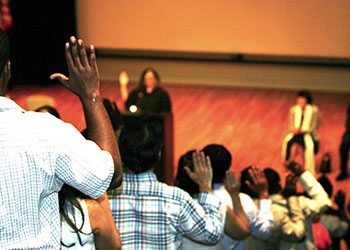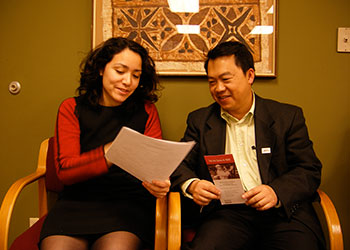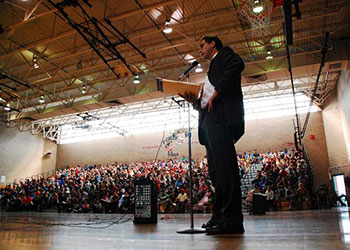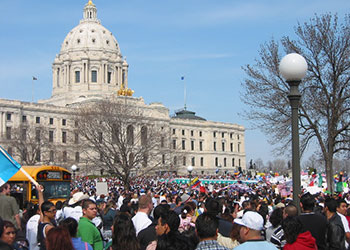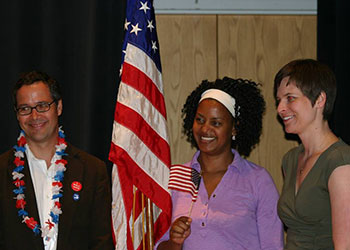News > Immigration In The United States
Irish, Italians, Uzbeks and the “Diversity Visa” program
Posted on Nov 02 2017

The Diversity Visa Lottery came under attack this week when Trump called for its abolition because accused terrorist Sayfullo Saipov emigrated to the United States through that program seven years ago. Here’s a quick summary of when and why the Diversity Visa Lottery began, what the program is today, and why it has nothing to do with terrorism:
Why a Diversity Visa Lottery? Some history …
The original Diversity Visa Lottery, also known as the green card lottery, reserved 16,000 of its 50,000 annual visa quota for Irish immigrants. That was a pretty big clue to its origin: dissatisfaction of European-Americans with the low number of European-American immigrants in the 1980s. European immigrants had dominated U.S. immigration for centuries, from the 1600s all the way to the 1950s.
BBC and Vox quoted Tweets by CUNY Brooklyn College political science professor Anna Law, explaining
“The program was created by powerful and well placed Italian and Irish American Senators and Reps to help their co-ethnics immigrate.
“It was pork barrel legislation designed to benefit very specific groups. The lottery was created w/ a formula to make eligible only persons from nations who had sent a small # of peeps to the US; it obviated the need for family ties/job skills. The “diversity” language was window dressing and branding to sell it. Was politically smarter a label than a visa for “peeps with no family ties or job skills.”
The stated purpose of the lottery was providing visas to people from “countries with historically low rates of immigration to the United States.” In this case, “historically low” referred to the five-year period before the visa application, not to the history of the United States. The Irish preference expired, and now the Diversity Visa Lottery allows no more than 7 percent of the visas to go to any single country.
The Diversity Visa Lottery passed in 1990 as part of a bigger immigration bill, approved by a House vote of 264-118 and a Senate vote of 89-8. President George H.W. Bush signed the bill, which had wide, bi-partisan support.
How the Diversity Visa Lottery works today
Most people around the world have no way to apply for a U.S. permanent resident visa – if they are not close family members of a U.S. citizen or permanent resident, skilled professionals with a job offer waiting and an employer willing to go through an extended visa process, or refugees waiting years for placement, they have no way to even apply. That’s why millions of people – nearly 14.7 million in 2016 –take a chance on the Diversity Visa Lottery. Only 50,000 winners are chosen each year, so that gives each applicant less than a one-half of one percent chance of winning.
If you are from a country that sent more than 50,000 immigrants to the United States in the past five years, you cannot apply for a diversity visa. Right now, that means no applicants from Bangladesh, Brazil, Canada, China (mainland-born), Colombia, Dominican Republic, El Salvador, Haiti, India, Jamaica, Mexico, Nigeria, Pakistan, Peru, Philippines, South Korea, United Kingdom (except Northern Ireland) and its dependent territories, and Vietnam. Only applicants from an eligible country can apply.
Besides coming from an eligible country, applicants have to have at least a high school education or “two years of work experience within the past five years in an occupation that requires at least two years of training or experience to perform.”
Applicants must file online. The entry period for the 2019 visa lottery runs from October 18-November 22, 2017. (That’s a change – the original entry period was October 3-November 7, but a “technical issue” required throwing out all the entries made prior to October 10, so the time period was re-set)
Once the applications are in, the State Department conducts a computerized lottery to choose the lucky winners – who are then eligible to pay the fees and apply for a visa, but are not guaranteed acceptance. They have to go through the usual extensive application process, security checks, personal interviews, etc. that are required of every visa applicant.
Remember – that’s 14.7 million entries in the visa lottery and only 50,000 winners. Better odds than the Powerball, but still pretty steep.
Nothing to do with terrorism – but still not a great idea
If you are a wanna-be terrorist, the Diversity Visa Lottery seems like a strange route to make. First, you enter a lottery with a less than one-half of one percent chance of winning. Then you go through extensive background checks and personal interviews and wait for at least two years, probably more, for a visa. That doesn’t sound like a plausible terrorist plan.
Of course, that doesn’t make the program a good idea. Giving out visas by lottery does not endanger the country, but it also does not serve any obvious goal of immigration policy.
